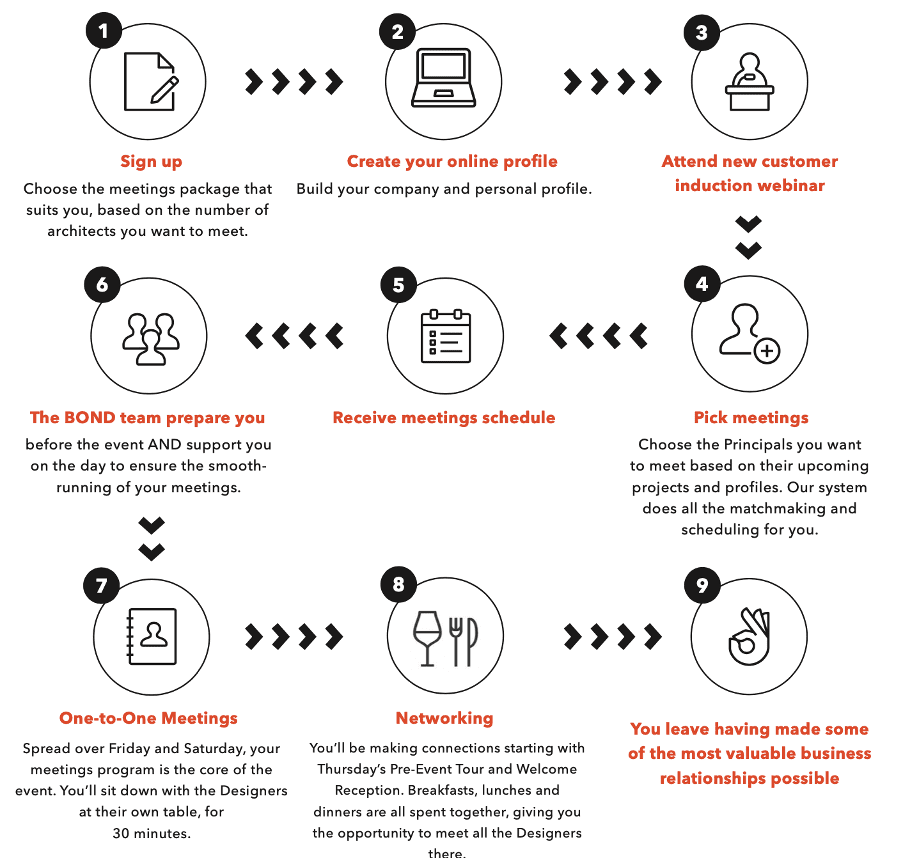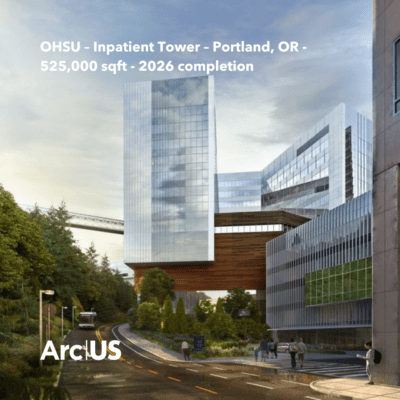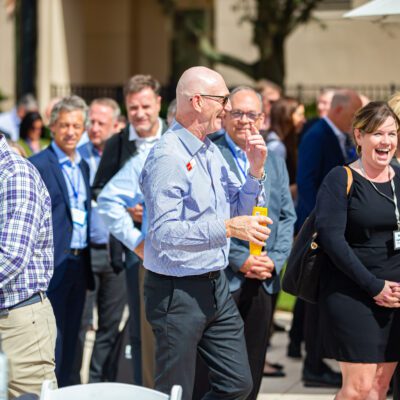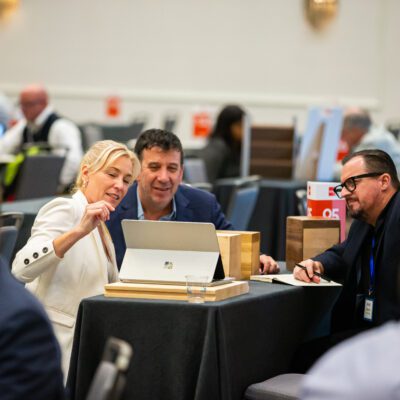Arc US 2024

1-on-1 with America’s Leading Commercial Architects
November 21-24, 2024
TX, USA
About
1-on-1 Meetings and Networking with America's Leading Commercial Architects
North America’s leading commercial architects and designers will be with us at Arc US in November. Every architect and designer you’ll meet has a portfolio of live, confirmed large-scale commercial projects and the influence to decide who gets specified and who doesn’t.
This is your chance to sit down, one-on-one with the people who are driving North America’s biggest and most interesting commercial projects. 3 days and nights away from deadlines and distractions means time and space get to know each other properly. And that’s where the magic happens.
Want to come and say hello?
Discover the highlights from last year’s event – read our review!
Reserve Your Spot – Last Year Sold Out!
Who Attends
America’s Leading Commercial Architects. Guaranteed.
America’s leading Principal Architects and Designers are giving us 3 days of their time to come and meet building product manufacturers who have interesting things to show them and who can help them deliver what their clients want.
If large-scale commercial projects are important to your business, these are the people you need in your life and you really will struggle meet them anywhere else.
Arc US regular attendees include:

Timothy Taylor
Principal
Gensler

Laurie L. Butler
Project Principal
HDR

Joe Winters
Principal Architect
HOK

Rauzia Ruhana Ally
Vice President, Managing Principal
Leo A Daly

Matthew Houchin
Global Technical Lead, Architecture
Jacobs

Moises Weber
Vice President
CannonDesign

James Torres
Principal
DLR Group

Ben Caldwell
Associate Director
Skidmore, Owings & Merrill
The Projects
Large-Scale Commercial Projects Throughout America
Scroll down for a sample of the 100s of commercial projects our architects are bringing to the table in November. The list should speak for itself.
Arc US is not like any other architect event: it’s how we qualify our ‘Buyers’ that sets us apart. Every single architect and designer that’s invited must:
- Be a Principal or above
- Work nationally in scope
- Evidence a portfolio of live, confirmed large-scale commercial projects.
That’s how we deliver an unmatched event experience and ensure your best possible ROI.
Here are just a few of the incredible projects our architects need your help with:
The speakers and networking opportunities are unmatched. Everything ran like clockwork, so it can be easy to overlook how much time and energy was put in to making it, from a customer’s point of view, look so effortless and professional. I’m quite impressed and blown away. This has been 1st class all the way.

Thomas Mozina
How it works
This is NOT a trade show
This is not like any other architect event.
You know who’s going to be here before you arrive and you will have a guaranteed number of 1-to-1 meetings with the ‘buyers’ of your choice. And this is just the start:
You are all together for 3 days and 3 nights at a luxury resort, so there’s time and space to meet everybody and have proper conversations and this opens up a whole world of possibilities. Because there’s a real community feel here and everyone’s more relaxed, open and helpful and any number of conversations can light up the commercial project trail right in front of you – you’ll see!
> 18 pre-arranged 1:1 meetings
+ 72 hours of networking in a luxury resort
= a proven formula for success

We will deliver North America’s true commercial project influencers with time and space to get to know each other properly.
You just need to show up!
SAVE YOUR PLACE
This is THE opportunity to meet with the top architects in the country. Relationships just keep growing.

Mike Granatowski
Program
Seminar timings and/or content may be varied at our discretion.
- Day 1
- Day 2
- Day 3
- Day 4
Thursday, November 21
Friday, November 22
Synopsis
Second to water, concrete is the most widely used material on earth. From the Colosseum and Pantheon in Rome to iconic skyscrapers, bridges, and infrastructure; concrete is the primary component of the built environment. These structures have exhibited the strength, durability and disaster resilience required to withstand the test of time. However, the manufacturing of Portland cement, the essential element that holds the concrete matrix together, accounts for approximately 8% of global emissions. Time is of the essence to reduce the Global Warming Potential within the built environment and the cement and concrete industry have developed a comprehensive roadmap to decarbonization.
The UN Environment Global Status Report estimates that by 2060, 2.5 trillion square feet of new construction will be built, doubling the existing building stock. The challenge ahead of us is, how do we build disaster resilient, net zero energy buildings, at a lower carbon footprint? Concrete is the material of choice due to its thermal mass, energy efficiency, disaster resilience, strength, and durability. This presentation will address how to deliver the tried-and-true benefits of concrete while radically reducing concrete’s carbon footprint.
We will review where the concrete industry is and where we are headed on our sustainability journey, focusing on NRMCA’s sustainability initiatives and goals for carbon reduction. The materials and strategies that are available today to reduce concrete’s embodied carbon will be explored in detail, from sustainability specifications to implementing recycled materials. We’ll also look to the future at the research and development of innovations that are reshaping the raw materials used and the means and methods employed to manufacture concrete. Lastly, the sustainability-resilience relationship will be studied through the review of published data, including case studies of insurance costs, life cycle energy consumption and disaster resilience.
Biography
Justin McCain is the Director of Building Innovation with the National Ready Mixed Concrete Association (NRMCA). He is responsible for educating, advocating and promoting concrete to the design-build community throughout Texas, Oklahoma, Kansas and New Mexico. As part of NRMCA’s Build with Strength team, McCain converts buildings that would have been built with other building materials to concrete through presenting first cost and life cycle operational costs to owners, developers, architects, engineers, and general contractors. He also positions concrete as the building material of choice by educating the design-build community on concrete, contract specifications and providing expert consulting on reducing concrete’s carbon emissions and global warming potential through life cycle assessments and cradle to gate analysis. McCain holds a bachelor’s degree in Construction Management from Everglades University. Prior to joining the NRMCA, he spent 16 years in the heavy civil construction industry, primarily estimating, negotiating, and managing projects as a general contractor. He has contributed to constructing approximately $1.8 billion of projects, including bridges, tunnels, underground utilities, and site developments. His experience encompasses placing cast in place concrete and shotcrete in a variety of structure types and applications. McCain is passionate about value engineering, alternative contract delivery and ways to collectively build better.
Synopsis
This presentation will explore the use of digital media in the commercial retail industry. Can we actively begin to look to this medium as a replacement for traditional architectural finishes? Indeed, there are many advantages to moving from traditional storefront architectural finishes into the world of digital media as architectural skin, particularly in the realm of sustainability, however, design is not the only consideration. The operational component is exceptionally important in terms of content, responsibility, and maintenance yet it is often not addressed in the design stage. Issues like maintenance and installation are ongoing issues which can affect the overall effect of the brand message. Digital media must be intentional, from a content and context perspective but also from the perspective of longevity and relevancy. Architectural materials and finishes can deconstruct with poor workmanship, but in using digital installations as architectural skin, it is more immediately evident, and therefore the importance of the operational aspect is key.
Often underplayed due to cost and logistics, digital media as architectural skin brings different opportunities for retailers with greater bandwidth for experiential moments and flexibility and sustainable responsibilities which must be holistically considered. How do we ensure that we incorporate operational best practices as part of the design in the beginning to create memorable, innovative, and responsible digital storefronts?
Biography
Kim has studied architecture, art and business with a M Arch in Architecture and BA in Visual Art and has recently completed her executive MBA. She shares the mantra that “good design is good business” and believes in the process of Design Thinking and the end user. With over 30 years of experience in fashion and retail including tenure at major European, American and Canadian retail brand houses, she has worked in Europe, Asia and across Canada. Kim is national Senior Director, Client Design + Delivery in the Architecture Department in Development for The Cadillac Fairview Corporation Ltd. based in Toronto, ON, Canada.
Kim’s focus is on the intersection of design and business as it relates to sustainable practices within retail and the commercial world. This focus has resulted in the development of sustainable sorting stations within the dining halls in the CF properties, a retail space in CF Toronto Eaton Centre in collaboration with OCAD university, focusing on circular economy studies, and the development of operational standards for the use of digital media for retail clients.
Multi-million retail development accomplishments include the expansion at Rideau Centre in Ottawa, the 25-million-dollar Client design component of the Dining Terrace addition at Richmond Centre in Vancouver, Toronto Eaton Centre Urban Eatery, and the CF Marché des promenade in St. Bruno, Quebec. Kim spent 9 years as a part-time Professor in the York University/Sheridan College Joint Program in Design. In addition to sustainable practices her research is centered on retail culture, power of experience, and the impact of design in visual. She presented the paper “Myth and the Mall” at the Pratt Institute, NYC and "Display and the Spectacle: consumption 101?" at the Fashion, Style, Appearance, Consumption and Design PCA/ACA National Conference in Washington DC and Indianapolis. Kim presented a paper for the DMI in London titled "Stakeholders as design filters; the role of the Commercial Real Estate Developer in retail design" and has recently participated in a symposium at the Media Biennale in Toronto at the Toronto Metropolitan University on Digital media. Kim continues to contribute to student design reviews and panels at both OCAD, Sheridan and George Brown College, and sat as advisor to the Sheridan College Experience Design panel. She is a co-founder of the design collective, moimoi design.
Saturday, November 23
Synopsis
The AEC industry knows that forced labor permeates the building materials supply chain. Human suffering and materials manufacturing are inseparable, with more than 8 million people exploited through supply chain and construction activities globally. As the AEC industry forms an ethical response to an ungovernable problem, what should our approach be to advancing supply chain equity? Who is integral to the solution, and what will success look like? Phil Bernstein and Billie Faircloth unpack the ambitious call for architects, engineers, and contractors to prevent labor exploitation. Elaborating on where and why forced labor occurs in the building materials supply chain, they further demonstrate how this industry can learn from past and current attempts to tackle intractable problems. Community- and cross-sector-based supply chain equity efforts offer lessons in policy-making, implementation, capacity building, and best and emerging practices. Bernstein and Faircloth review current efforts promising immediate practice transformation and identify knowledge gaps that will engage practitioners in speculating on industry-wide transformation over the next two decades.
Biography
Phil Bernstein FAIA, is a Deputy Dean and Professor, Adjunct at the Yale School of Architecture, where he has taught courses in professional practice, project delivery, and technology since 1988. He was formerly a Vice President at Autodesk, where he was responsible for setting the company’s future vision and strategy for technology and sustaining the firm's relationships with strategic industry leaders and associations. Prior to joining Autodesk, Phil practiced architecture as a principal at Cesar Pelli & Associates (now Pelli Clarke + Partners) where he managed many of the firm’s most complex commissions including projects for Reagan National Airport, the Mayo Clinic, and Goldman Sachs. He writes extensively on issues of architectural practice and technology, and his books include Architecture | Design | Data – Practice Competency in the Era of Computation (Birkhauser, 2018) and Machine Design: Architectural Futures in the Era of Artificial Intelligence (RIBA, 2022). Phil has been honored twice by DesignIntelligence as one of the “30 Most Admired Educators in Architecture” and was named as an Outstanding Industry Contributor by the Connecticut Construction Institute. He received a Bachelor of Arts magna cum laude with Distinction in Architecture from Yale University and a Master of Architecture also from Yale. He is licensed to practice in California.
Synopsis
Some architectural professionals have embraced AI in the workplace, but many companies are not ready for it. Join Beth Z, Your Nerdy Best Friend, for an overview of the challenges of AI in your business and how to put your company and employees on the right path to increased productivity and decreased stress.
Join this program to discover:
• Why you need an AI policy (and what goes into one)
• How AI can replace tasks (not jobs)
• What goes into an “AI Day”
• How to protect your company’s data
• When to talk about the AI ethics
Biography
Since her first Motorola RAZR flip phone, Beth has made a verb out of the word "nerd." She's here to help you filter through thousands of apps, gadgets, widgets and doodads to find the perfect free and bargain technology tools for work and home. Although the only real trophy she ever won was for making perfect French fries at McDonald's in high school, Beth Z has been featured on Best Speaker lists by several organizations who write best speaker lists. She has written a whole shelf of books on apps and has spoken to more than 100 thousand audience members just like you. And if you're puzzling over why she goes by "Beth Z"... it's because she only finds about three people a year who can pronounce her last name.
Sunday, November 24
I truly enjoyed the format of the one to one meetings and feel that I made some real connections with suppliers that I will be calling on for future projects. I was actually surprised to find that almost every supplier I met had something that I feel I could specify.

























